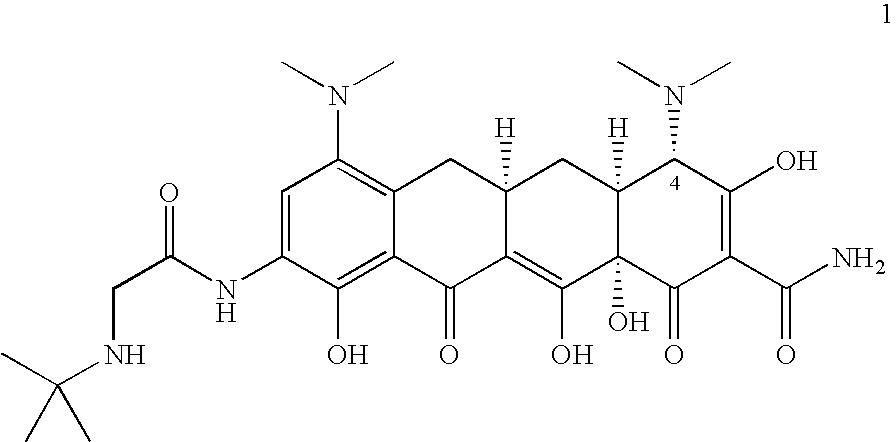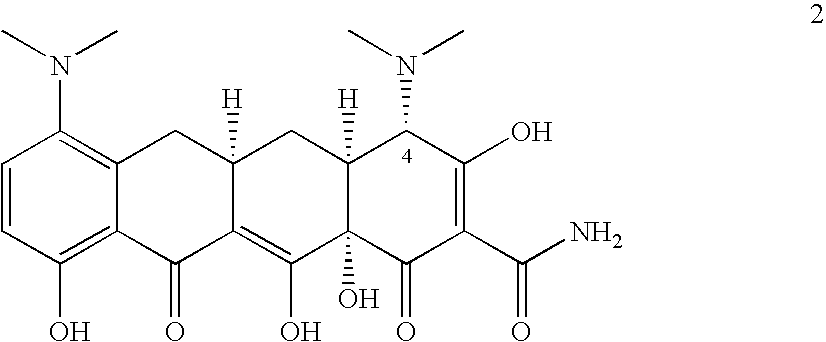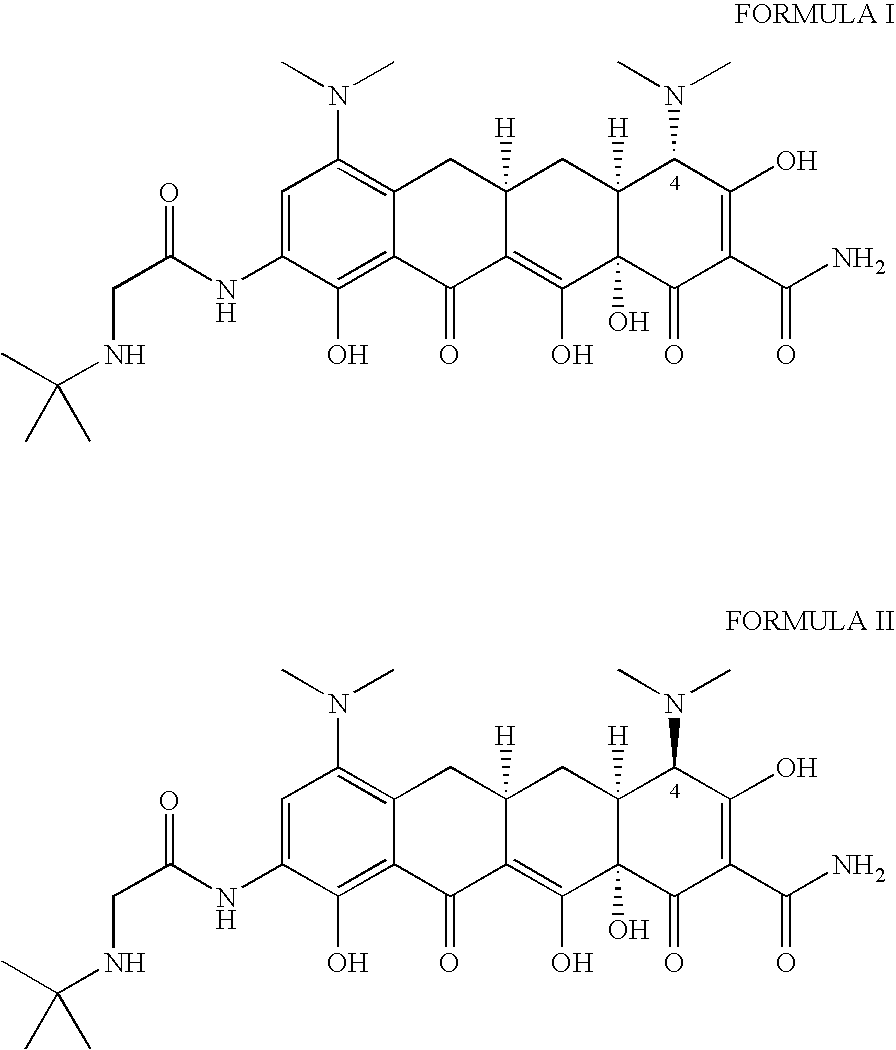Tigecycline and methods of preparing intermediates
a technology of tigecycline and intermediates, applied in the field of methods of preparing intermediates, can solve the problems of undesirable degradation products, degraded by epimerization, and none of the above-mentioned degradants has succeeded in reducing both epimer formation and oxidative degradation, and not introducing additional degradants
- Summary
- Abstract
- Description
- Claims
- Application Information
AI Technical Summary
Benefits of technology
Problems solved by technology
Method used
Image
Examples
examples
[0221]Addition time, antisolvent volumes, addition temperature, sulfuric acid quantity, stirring rate and the addition regimes (direct and reverse) were studied in a 50 mL automated multimax system.
Set 1—Experiments where the Reaction Mixture was Added to an Antisolvent.
Table 8 shows the studied variables and the lower / higher values of each.
TABLE 8Variables for reverse addition experimentsVariableLowHighAddition time, min30180Addition temperature, C.1032H2SO4, wt to wt of minocycline3.95.8HClStirring rate, rpm200800
[0222]Sixteen experiments were run the results of which are given in Table 9. Statistical analysis of the results was performed using Design Expert® software and it was found that for the reverse addition regime, higher addition temperature, faster addition of reaction mixture and lower sulfuric acid quantity result in faster filtration. The stirring rate showed a very weak influence on filtration rate.
TABLE 9The results of sixteen experiments where the reaction mixture i...
PUM
| Property | Measurement | Unit |
|---|---|---|
| Temperature | aaaaa | aaaaa |
| Temperature | aaaaa | aaaaa |
| Temperature | aaaaa | aaaaa |
Abstract
Description
Claims
Application Information
 Login to View More
Login to View More - R&D
- Intellectual Property
- Life Sciences
- Materials
- Tech Scout
- Unparalleled Data Quality
- Higher Quality Content
- 60% Fewer Hallucinations
Browse by: Latest US Patents, China's latest patents, Technical Efficacy Thesaurus, Application Domain, Technology Topic, Popular Technical Reports.
© 2025 PatSnap. All rights reserved.Legal|Privacy policy|Modern Slavery Act Transparency Statement|Sitemap|About US| Contact US: help@patsnap.com



